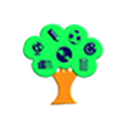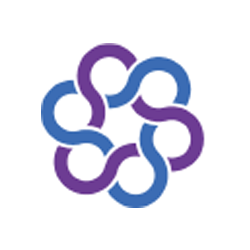Computing
A high-quality computing education equips pupils to use computational thinking and creativity to understand and change the world.
Computing has deep links with mathematics, science, and design and technology, and provides insights into both natural and artificial systems.
The core of computing is computer science, in which pupils are taught the principles of information and computation, how digital systems work, and how to put this knowledge to use through programming.
We follow the National Curriculum Programme of Study for Computing.

Intent: The vision for COMPUTING at Cottons Farm Primary Academy
The intent is to provide a curriculum which enables our children to be computer literate by the time they start secondary school, allowing them to survive in the technologically rich world in which we live. This includes: knowing how to use basic desktop productivity software to create digital content, being able to design; write and debug programs through coding; knowing how search engines work and understanding the importance of internet safety. Also, in line with our Harnessing Technology Maximising Learning (HTML) strategy, offering every child access to an iPad, our curriculum aims to provide the underpinning skills and confidence to enable all pupils to use their iPad effectively across the curriculum to support their learning.
Our Computing curriculum is designed to cover all three aspects of Computing: Computer Science, Information Technology and Digital Literacy.
1 - Computer Science:
Computer Science includes teaching children how to design, write and debug programs, controlling physical systems, understanding what algorithms are and how to use variables. We use Scratch coding to support the teaching of this and our UKS2 children apply/develop their Scratch coding knowledge using the Micro:Bits to code a physical instrument. This ensures consistency from year 1 to year 6 and affords opportunity for challenge and the development of computational thinking through transferring Scratch coding knowledge into the Micro: Bit platform. This helps to prepare them for more advanced programming in Key Stage 3.
2 - Information Technology:
Information Technology teaches pupils how to use a range of devices and software to create, organise and store digital content. Throughout the course of Key Stage 1 and Key Stage 2
Our children learn to use a range of productivity software, including Microsoft Word, Microsoft PowerPoint, Microsoft Excel, TuxPaint, Seesaw and PicCollage. It is important that all children have had access to all of these types of software before leaving Key Stage 2 to enable them to be confident and competent at using these in Key Stage 3. The children will also have been taught to use search engines effectively from Year 2 onwards. In year 4 they are taught how to use stop-frame animation software. In year 5 they are taught how to create 3D modelling images and how to use sound files and recordings to create and edit their own podcast. In year 6 they are taught how to make a film using video editing software such as iMovie and DoInk.
3 - Digital Literacy:
Digital Literacy is one of the most important aspects of computing as it includes Internet Safety. At Cottons Farm, we believe that the safety of children is of the utmost importance and their Internet Safety is paramount, especially in this technological time and with pupils being able to take their iPads home for potentially unsupervised use. Each half-term, the children are taught a discreet Internet Safety lesson in week 1 (basic skills week), where they are introduced to a new strand from the Education for a Connected World (2020) document. We then have additional themed days throughout the year to ensure children are reminded of the importance of staying safe online – including celebrating Safer Internet Day. However, internet safety is not something that should be taught discretely. Teachers are encouraged to discuss internet safety with their pupils on a regular basis – especially in Key Stage 2 as many of our children use social media on a daily basis while at home. Digital literacy also covers IT beyond school; year 1 role play how IT is used in libraries, banks and supermarkets. Year 3 discuss the use of Local and Wide Area Networks, Year 4 learn how computers are used to create stop frame animation films and Year 6 learn how spreadsheets are used to organise information in the real world.
Curriculum Design, Coverage & Progression
The computing overview details how the national curriculum objectives are mapped out for each year group, to show full coverage and progression of skills. The key computing vocabulary to be taught is listed on the final page of overview to show clear progression of technical terms. Formative and summative assessments are provided along with the unit resources to provide high quality assessment for learning. All ‘Wow’ events are incorporated into the curriculum to engage and enhance the learning experiences, such as the Digital Lift-Off day and Safer Internet Day.
Children can achieve aspects of the Harmony Pledge through the Computing curriculum, for example the importance of being an Eco-Warrior is explored through the concept of digital learning and the reduced printing reliance, hence saving the environment. We also teach children to be Workwise by organizing their work efficiently using Office 365 cloud storage.
Implementation
Units of study that are a requirement of the national curriculum have been mapped out to ensure progression in skills takes place. This ensures that skills are revisited over the course of Key Stage 2. Key knowledge, skills/techniques and understanding are identified at the start of each computing unit of work. These link back to our key intentions, ensuring that all of the key intentions are covered at least once within each computing unit of work. We have divided Computing into three areas; Information Technology (IT), Computer Science (CS), and Digital Literacy (DL) to ensure that our children are masters of technology and fluent in a range of programs. Lessons are thoughtfully sequenced with opportunities for metacognition opportunities using quizzes and revision of learning. Computing skills are mapped out progressively within each year group ensuring that children make progress in their skill-set year on year.
Online Safety:
At the start of every unit children will understand how to stay safe when using the internet; they will be reminded about safe passwords and what to do if they discover inappropriate material and how to be safe when searching. In addition, there are units of work throughout the year groups which have a particular focus on online safety. During our PSHE lessons we also help the children to understand how to stay safe online, both through focussed units of work as well as through links with other units and special days such as Safer Internet Day. Weekly social media #WakeUpWednesday posts ensure that parents are given support and guidance via our Academy Dojo page and the Academy School Spider communication platform on how to keep their children safe at home, using quality resources from the National Online Safety Centre.
To ensure that the computing curriculum is being effectively implemented across the school, checks are done on timetabling to ensure children have 1 hour of Computing per week, as a minimum. Staff and pupil voice questionnaires are carried out on an annual basis - changes are made where necessary in accordance with our pupils’ needs and staff CPD requirements. Increased training and support is planned for 2022-23 due to the HTML implementation strategy, meaning staff, pupils and families will require extra support around Computing skills and how to use their new iPad both onsite and offsite. The computing curriculum design is flexible and as new apps are developed or become more-suitable, these will be adopted within the curriculum design to ensure it stays cotemporary and relevant. Targeted staff training is planned to ensure teachers have the confidence to deliver a high quality computing curriculum.


